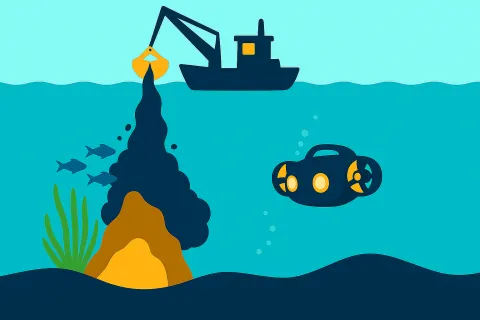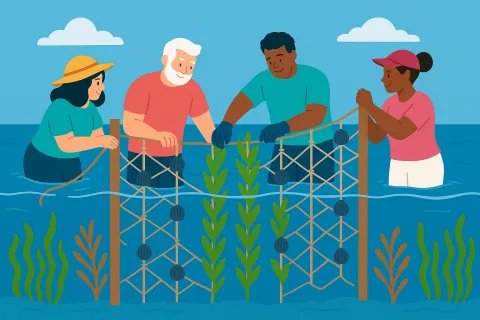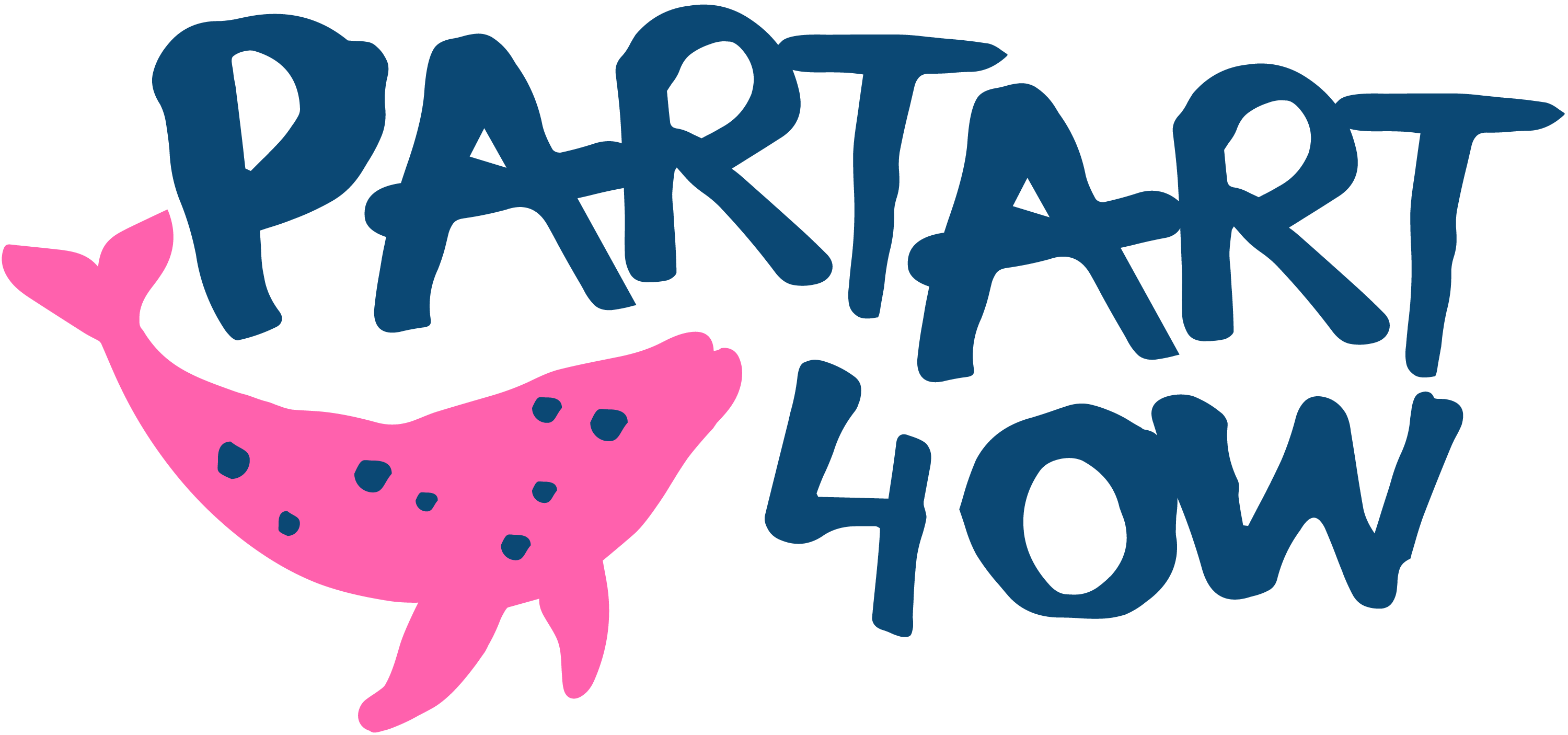Meet the First 6 PAIs Selected by PartArt4OW
After a competitive open call that received 434 applications from across Europe, we’re thrilled to announce the first 6 Participatory Art Initiatives (PAIs) selected to join the PartArt4OW accelerator. These initiatives represent bold, creative, and community-driven responses to the challenges facing our seas, rivers, and water basins. Learn more about their unique visions below.

The Art of the Dredge project investigates the social and environmental consequences of large-scale dredging in Luleå, Sweden. It blends audiovisual fieldwork, local interviews, and public workshops to raise awareness of the rarely seen but highly impactful activity of sediment relocation for harbour deepening. The project captures underwater and above-water footage and sound, which are then used in collaborative community mapping sessions that creatively express emotional and experiential responses to dredging. By weaving together scientific insight and personal narratives, it reveals how infrastructure reshapes not only ecosystems but also cultural identities and daily life. The initiative engages diverse community members, including fishers and youth, amplifying perspectives often marginalized in decision-making. The outcome—a multimedia exhibition and online platform—will make local voices visible while advancing ocean literacy, critical reflection, and more inclusive maritime policy dialogues across Europe.

The Kyiv Whale Eco Hub transforms Ukraine’s iconic Kyiv Whale sculpture into a participatory Water Story Lab that combines art, citizen science, and environmental education to address freshwater pollution, microplastics, and climate-driven water degradation. Building on the success of the original sculpture—created from community-collected plastic and outfitted with pollution-responsive lights—the project hosts workshops, clean-ups, and an Eco Art Accelerator where children and artists co-create artworks about invisible water issues. Innovative elements include interactive light and sound installations using real-time environmental data, a solar-powered and accessible EcoHub for displaced and disabled individuals, and a citizen science program that converts river data into public art and educational tools. A digital platform traces Kyiv’s plastic trail to the Black Sea and promotes circular economy practices. The initiative directly engages over 1,500 people and reaches up to 500,000 more through media and open-access educational resources.

Seatizen-Bio Murals is a participatory public art project in Gdańsk’s Brzeźno district that transforms marine waste into collaborative eco-storytelling through three bio-murals co-created by local residents, scientists, and artists. Using sustainable materials like shellcrete, biocement, and recycled glass, the project addresses macroalgae extinction, marine pollution, and biodiversity loss in the Baltic Sea. It emphasizes inclusive engagement by involving diverse community members—including children, seniors, people with disabilities, and gardeners—in workshops that blend marine science, material experimentation, and artistic expression. Centered around Widlik, a fictional character based on red algae Furcellaria lumbricalis, the murals serve as emotionally resonant tools for ocean literacy through art-science labs, co-painting sessions, and interactive storytelling.

Tidal Orchards is a participatory public art project in Loch Eishort that creates a living sea garden to foster intertidal stewardship, blending ecological restoration, community-led sculpture, and cultural revival. Co-designed by artists, marine scientists, fishers, foragers, local schools, and residents, the sea garden addresses the environmental impacts of fish farming and mass tourism while serving as both a biodiverse habitat and cultural gathering space. Through workshops that combine citizen science, culinary foraging, storytelling, gaming, and somatic arts, the project draws on Gaelic traditions and global matriarchal marine cooperatives to promote ecological justice and intergenerational learning. As an open-source model for regenerative aquaculture and artistic collaboration, it provides free resources and is co-managed by the community to ensure long-term environmental and cultural resilience.

Posidonia Art Reef (PAR) is a participatory environmental art project in Bogliasco that merges marine science, civic engagement, and eco-art to restore Posidonia oceanica meadows and promote biodiversity. Local citizens—including students, fishers, and artists—co-create and install sustainable submerged sculptures that serve as both artistic expressions and artificial reefs. Through co-creation workshops, guided dives, and the MINKA citizen science platform, participants monitor ecological changes, while digital tools like a 360° Virtual Underwater Museum and augmented reality ensure inclusive access. Designed to be replicable and inclusive, PAR fosters emotional connection to the sea, engages underrepresented groups, and contributes to marine conservation efforts aligned with the EU Ocean Decade.

Sea of Sounds (SoS) is a participatory art and science initiative that immerses audiences in the acoustic world of whales through a shared virtual reality (VR) experience. It raises awareness about the pervasive threat of ocean noise pollution and its impact on marine mammals by combining scientifically grounded whale vocalizations with immersive storytelling, educational workshops, and an exhibition.The project builds on a successful 2024 pilot and includes the creation of an accessible, emotionally engaging VR experience for groups of up to six people. This will be complemented by interactive public educational workshops, a whale exhibition with bones and photographs, and a showcase event. Participants are active co-creators, shaping the narrative and contributing feedback. The final result will be distributed as a modular digital package for educators, enabling long-term use across schools and cultural venues throughout Europe and beyond. SoS inspires empathy, fosters ocean literacy, and empowers participants to advocate for marine conservation.
